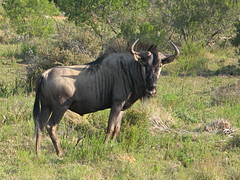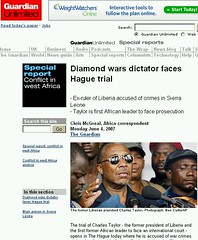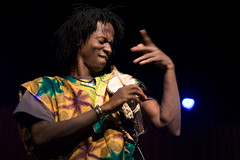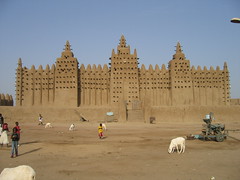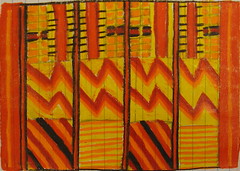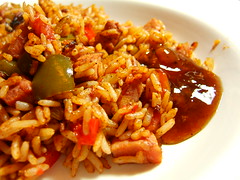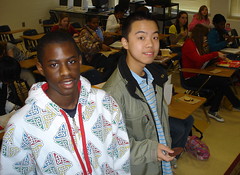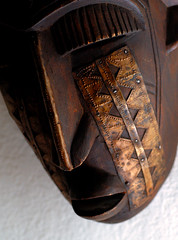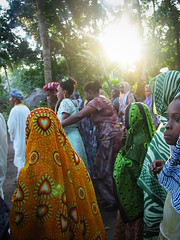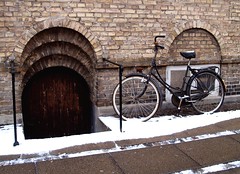From the NY Times:
Downstairs, legislators gnashed their teeth, while upstairs at the Capitol here this week, the new governor claimed victory against the old customs down below.
Six weeks into the term of Gov. Bobby Jindal, an extensive package of ethics bills was approved here this week, signaling a shift in the political culture of a state proud of its brazen style. Mr. Jindal, the earnest son of Indian immigrants, quickly declared open season on the cozy fusion of interests and social habits that have prevailed among lobbyists, state legislators and state agencies here for decades. Mostly, he got what he wanted.
Mr. Jindal, an outsider to that rollicking if sometimes unsavory banquet, a Republican with a missionary’s zeal to smite Louisiana’s wickedness at one of its presumed sources, called on the Legislature to reform itself and its high-living ways.
Grudgingly, pushed by public opinion and business pressure, it went along. When the legislative session ended Tuesday, lawmakers had passed bills aimed at making their finances less opaque, barring their lucrative contracts with the state — some have been known to do good business with them — and cutting down on perks like free tickets to sporting events. The bills, which advocates say will put Louisiana in the top tier of states with tough ethics rules, now await Mr. Jindal’s signature, which should come early next week.
Mr. Jindal overcame resistance by convincing lawmakers that no job growth would occur in the state until it cleaned up its act and brought its ethics laws into the national mainstream.
“I’ve talked to C.E.O.’s in New York, even the president of the United States,” Mr. Jindal said in an interview, and when “you ask them for more investment, more help on the coast and other areas, their first reaction always is: ‘Well, who do you need to know? Who do I have to hire? Is this money going to end up in somebody’s pocket?’ ”
That had to change, the governor said, and he was using his “narrow window” — his honeymoon at the Capitol — to do it.
The volume of grumbling suggested real change was afoot.
“This is huge,” said D. W. Hunt, a veteran lobbyist at the Capitol. “This is a sea change. This will seriously, dramatically change things. The meta-theme is the transparency.”
Barry Erwin, president of the Council for a Better Louisiana, a good-government watchdog group, described the new bills as “a major change in the culture.”
“It’s a world of difference, particularly on the disclosure side, and the same thing with conflict-of-interest,” he said.
The new requirements will force all state legislators, as well as most other elected and appointed officials around the state, to disclose all sources of income, real estate holdings and debts over $10,000. (Judges are exempted.) Lawmakers and executive branch officials will no longer be able to get contracts for state-financed or disaster-related work. Lobbyists will also have to disclose their sources of income and will be limited to spending no more than $50 per elected official, per meal; splitting the tab, say among other lobbyists or legislators, will also be prohibited.
The new income disclosure requirements for legislators are comparable to those of Washington State, ranked first in the country by the Center for Public Integrity.
Mr. Jindal was unable to persuade lawmakers to pass another bill that would have ended retirement benefits for public officials convicted of crimes related to their state work.
Similar indulgences, of course, have gone on in other state capitals, though Louisiana does rank low nationally on state ethics charts. Here, however, they are carried out with particular frankness: lawmakers are known to scour the chambers for willing lobbyists when a day’s session ends, hoping to cadge a dinner invitation. They need not look far.
Mr. Jindal took that penchant on as well, effectively aiming a blow at the Capitol’s de facto sister institution, Ruth’s Chris Steak House, where business is transacted nightly, courtesy of lobbyists (“sponsors,” in legislators’ parlance).
The governor, ignoring cries of pain and going against the unswerving devotion to Louisiana’s food culture, pushed for the $50-a-meal cap, at any restaurant. No more unlimited spending.
In a town where legislators have been known to proclaim paid-for meals a principal draw to public service, this was an especially unpopular move. Last week, State Representative Charmaine L. Marchand of the Lower Ninth Ward in New Orleans said the limit would force her and her colleagues to dine at Taco Bell, and urged that it be pushed to $75 per person, to give them “wiggle room.”
No public groundswell took up her cause, and the $50 limit held.
Meanwhile, the mood is feverish but still merry at Ruth’s Chris. A recent night found it packed with lobbyists and legislators. With the Capitol five miles away, its popularity will be threatened when the new rules go into effect on March 30. But the lavish springtime banquets held by lobbyists, where tables groan with choice Louisiana seafood, do not appear to be immediately endangered.
In the legislative chambers, the votes for this ethics makeover were mostly unanimous, though the sarcastic commentary suggested that enthusiasm might not have been what was motivating legislators. Mr. Jindal has public opinion on his side, however.
“I want to know who’s doing the corrupting,” a state senator, Francis Thompson, said, mock-seriously, to Mr. Jindal’s principal ally in the State Senate, its president, Joel T. Chaisson. “Any time there’s some abuse, I wish you would let us know, as our leader,” he said to Mr. Chaisson, as other senators chuckled.
The point was not lawbreaking, though, but what has long been permitted under existing loose laws, say reform advocates like Mr. Jindal.
Four stories up, in the skyscraper Capitol built by Huey Long, Mr. Jindal is unconnected to the slow-moving rural Louisiana of Long and those who followed him. At 36, he appears to be a young man in a hurry, acutely conscious of Louisiana’s poor national image, aware of his own rising star among Republicans and analytical about the historic missteps that have led Louisiana to coast on its mineral wealth, straight to the bottom of national rankings in ethics and a host of economic and social indicators.
In an interview in his office, words and prescriptions come shooting out in a rapid-fire nonstop monologue. Inside of a half-hour, Mr. Jindal shoehorned a brief history of Louisiana’s political and economic problems, a historical excursion on the office he was sitting in, an agenda for his remaining four years, an analysis of why the state’s government had failed, a recapitulation of his recent campaign, a paean to his father, an explanation of why he pushed the ethics bills, and other topics.
Mr. Jindal said Hurricanes Katrina and Rita had presented him with a unique moment in his state’s history to enact reforms; as he put it, the storms “caused people to rethink how they wanted their social institutions to be designed, how they wanted services to be delivered, what kind of state they wanted to call home.”
What follows could be much tougher, given the scope of Mr. Jindal’s ambitions — detractors grumble that they are limitless — the bruised feelings among legislators and the scope of Louisiana’s challenge: a poorly educated work force, bad roads and infrastructure, a persistent stream of residents leaving the state, and little business investment. He has already talked of cutting taxes on business, prompting questions about whether he will move beyond such traditional Republican economic strategies.
“My biggest concern is, we’ll run out of time,” Mr. Jindal said. “There are so many things we need to do in our state. It’s like being in this endless buffet and having this incredible appetite, but knowing there’s no way you’re going to be able to eat everything you want to eat, or taste everything that’s out there.”




